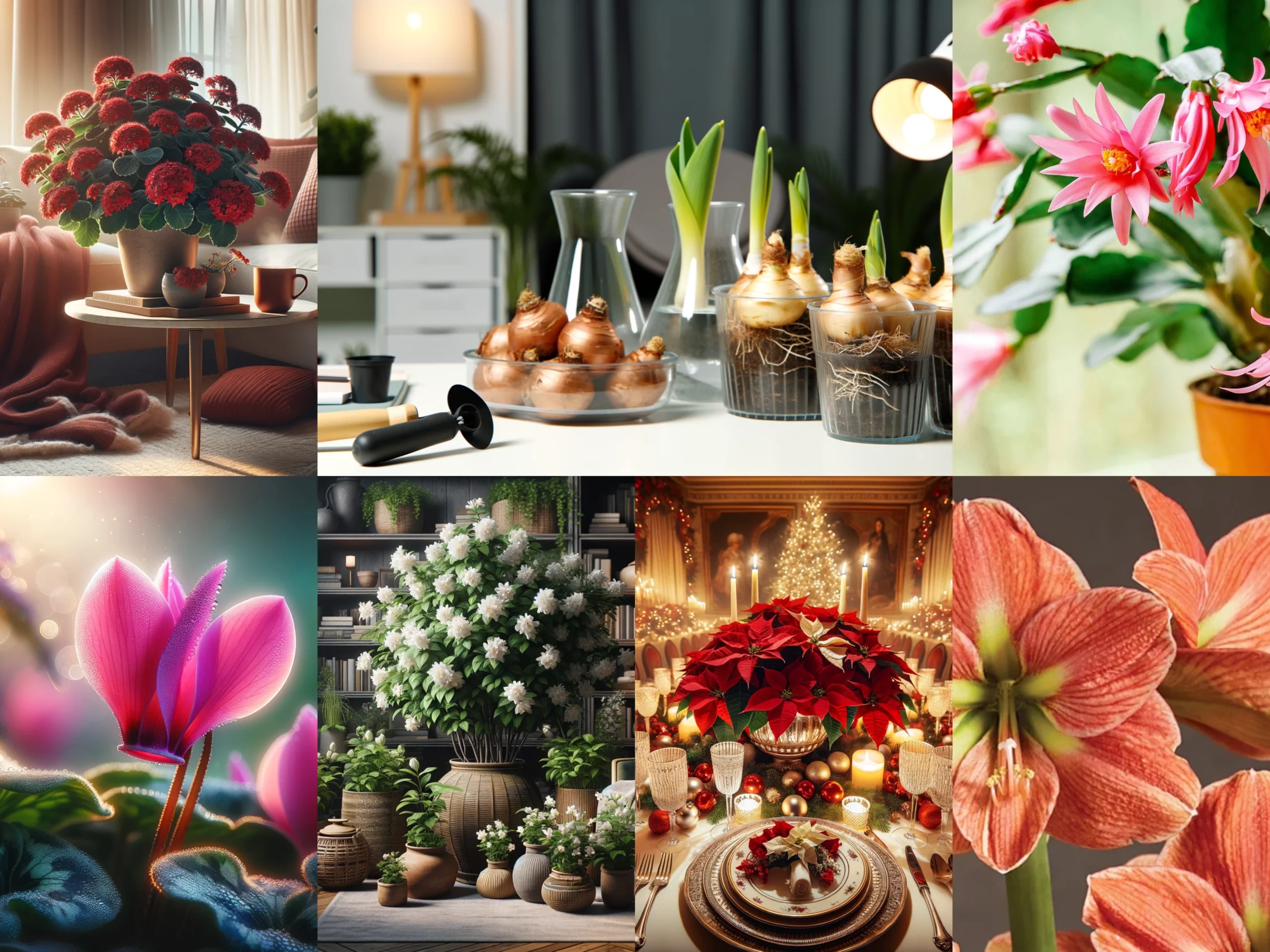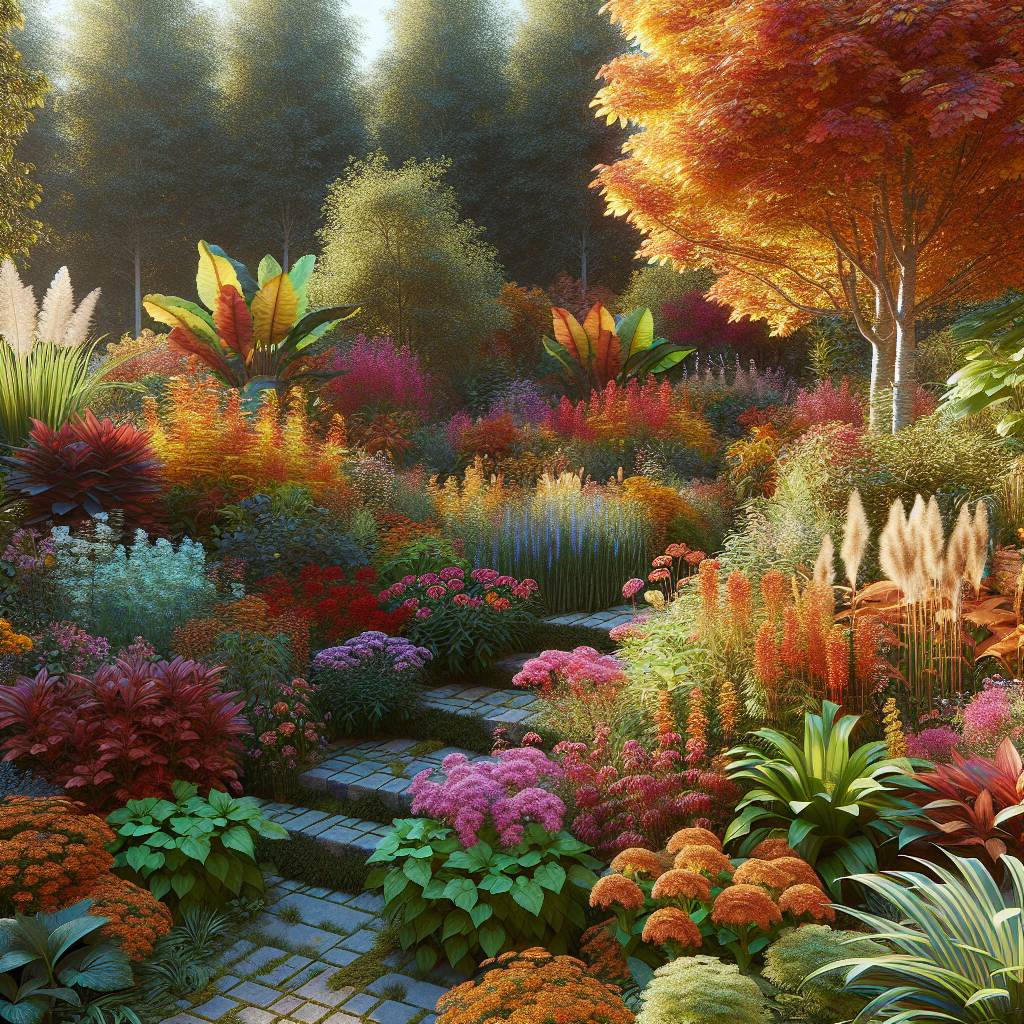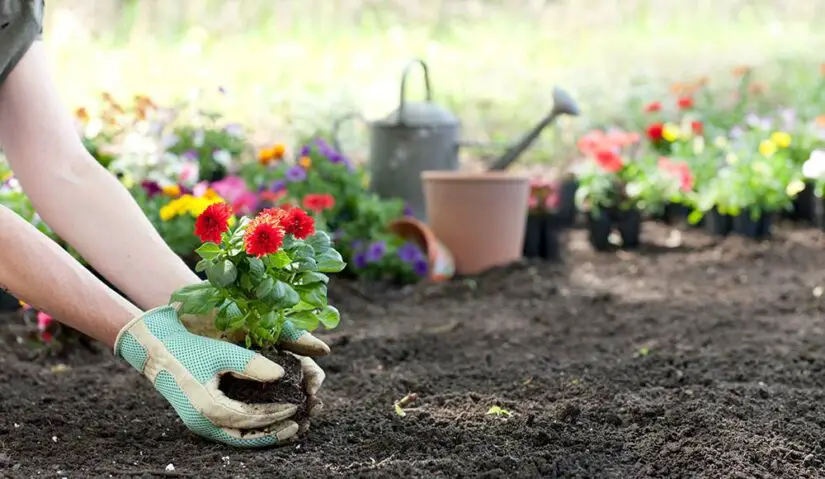Dreaming of vibrant blooms during the winter chill? Wondering how to bring the beauty of a garden indoors when snow blankets the ground outside? Dive into the world of winter flower gardening indoors and unlock a realm where blossoms bloom year-round, defying the frosty season’s norms. Curious about cultivating colorful petals in your cozy living space without stepping foot in icy gardens? Discover tips, tricks, and plant picks that will turn your home into a floral paradise even when it’s frosty outside. Embrace the joy of nurturing houseplants inside as we delve into the art and science of indoor winter flower gardening.
Key Takeaways
- Indoor winter gardening offers a burst of color and joy during the cold months, brightening up your home and mood.
- Popular winter flowering plants like Poinsettias, Christmas Cactus, and Cyclamen are excellent choices for indoor winter gardening.
- Consider easy-to-grow indoor flowers such as African Violets, Peace Lilies, and Orchids for a low-maintenance yet beautiful indoor garden.
- Explore unique indoor flowering plants like Paperwhites, Jasmine, and Winter Jasmine to add a touch of novelty to your winter garden.
- Forcing bulbs such as Tulips, Daffodils, and Hyacinths allows you to enjoy early blooms indoors, bringing a preview of spring to your home.
- Follow tips like providing adequate light, maintaining proper humidity levels, and regular watering to ensure successful indoor flower gardening during winter.
Benefits of Indoor Winter Gardening

Boost Mood
Indoor winter flower gardening can significantly boost your mood, especially during the colder months. Flowers like daisies and sunflowers are known to increase happiness levels and reduce stress. The vibrant hues and delightful fragrances of indoor flowers have a direct impact on uplifting your spirits instantly.
Certain flowers such as lavender and jasmine emit calming scents that can help alleviate anxiety and promote relaxation. Imagine coming home to a burst of color from blooming roses or cheerful pansies; it can truly brighten even the gloomiest winter days.
- Flowers like daisies and sunflowers increase happiness
- Lavender and jasmine scents calm anxiety
- Blooming roses bring bursts of color
Air Purification
Engaging in indoor winter flower gardening not only adds beauty but also purifies the air inside your home naturally. Plants like peace lilies and spider plants are excellent choices for improving air quality by removing toxins present indoors. By having these green companions (pets) around, you can effectively reduce allergies and respiratory issues by filtering out harmful pollutants.
The presence of indoor flowers and pets acts as a natural air filter, absorbing carbon dioxide while releasing oxygen into the environment, creating a healthier atmosphere at home. Peace lilies not only enhance aesthetics but also remove common toxins like formaldehyde from the air, making them an ideal choice for indoor gardens.
Popular Winter Flowering Plants
Amaryllis
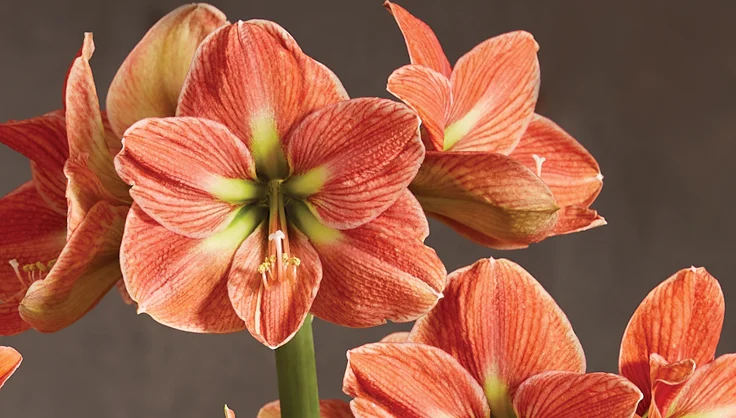
Amaryllis, a beloved winter flower, boasts striking large blooms available in an array of colors such as red, pink, white, and even striped varieties. These flowers are relatively easy to cultivate indoors from bulbs and can yield breathtaking blossoms throughout the winter months. Their vibrant hues bring warmth and cheer to any indoor garden setting.
When caring for Amaryllis plants, ensure they receive adequate sunlight and well-draining soil. Water them sparingly to prevent rotting roots but maintain moisture levels during active growth periods. With proper attention, these stunning flowers can thrive indoors during the colder seasons.
Christmas Cactus
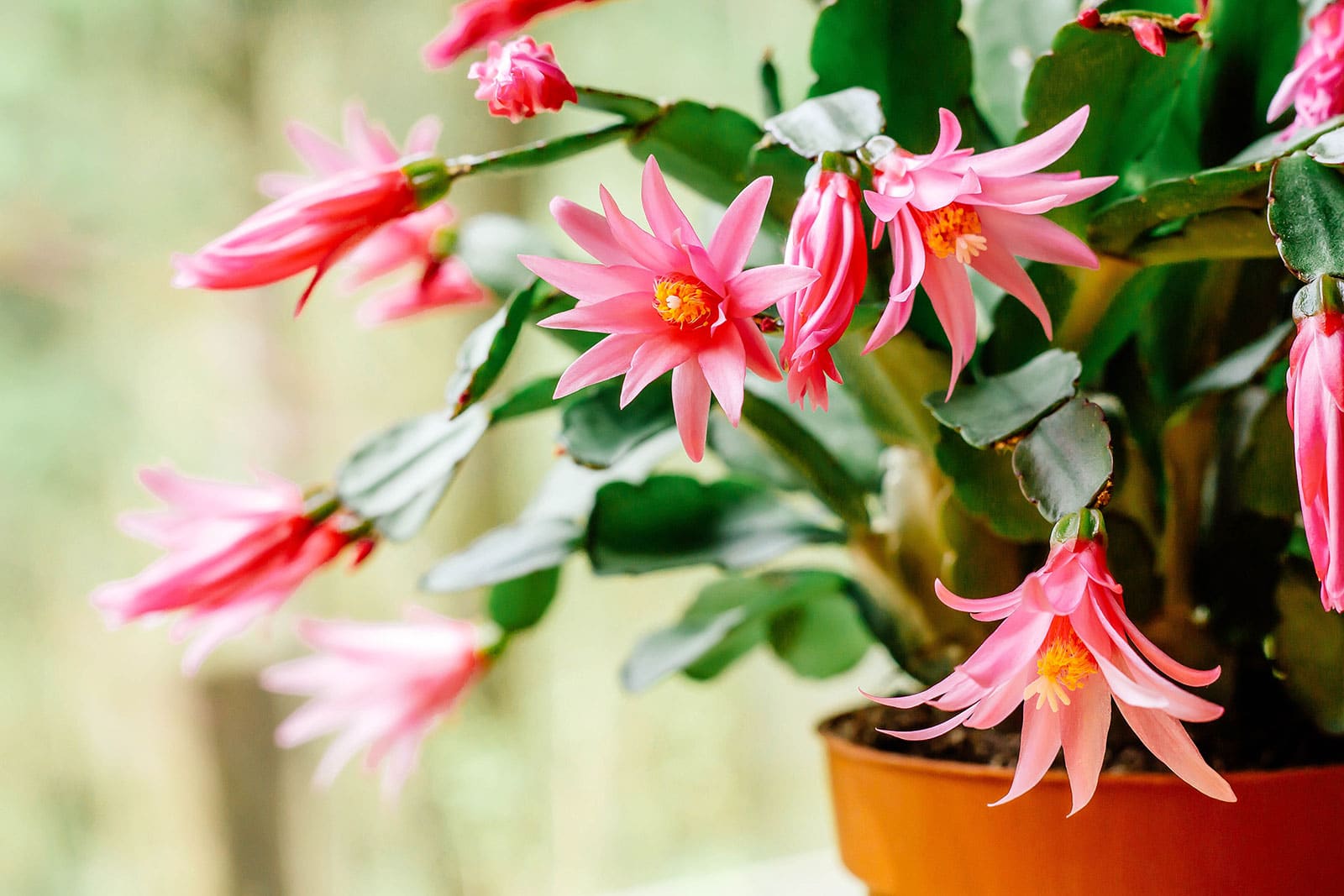
Christmas cacti are unique flowering plants that bloom precisely during the holiday season when other flora may be dormant. Featuring vivid blooms in shades of red, pink, or white, these plants add festive charm to your indoor garden decor. By providing sufficient indirect light and avoiding overwatering, Christmas cacti can become enduring additions to your home’s winter floral display.
To promote blooming in Christmas cacti next year, remember they require a period of darkness each day for about six weeks leading up to their flowering season. This mimics their natural habitat conditions and encourages robust blossom production when it’s time for them to shine brightly.
Cyclamen
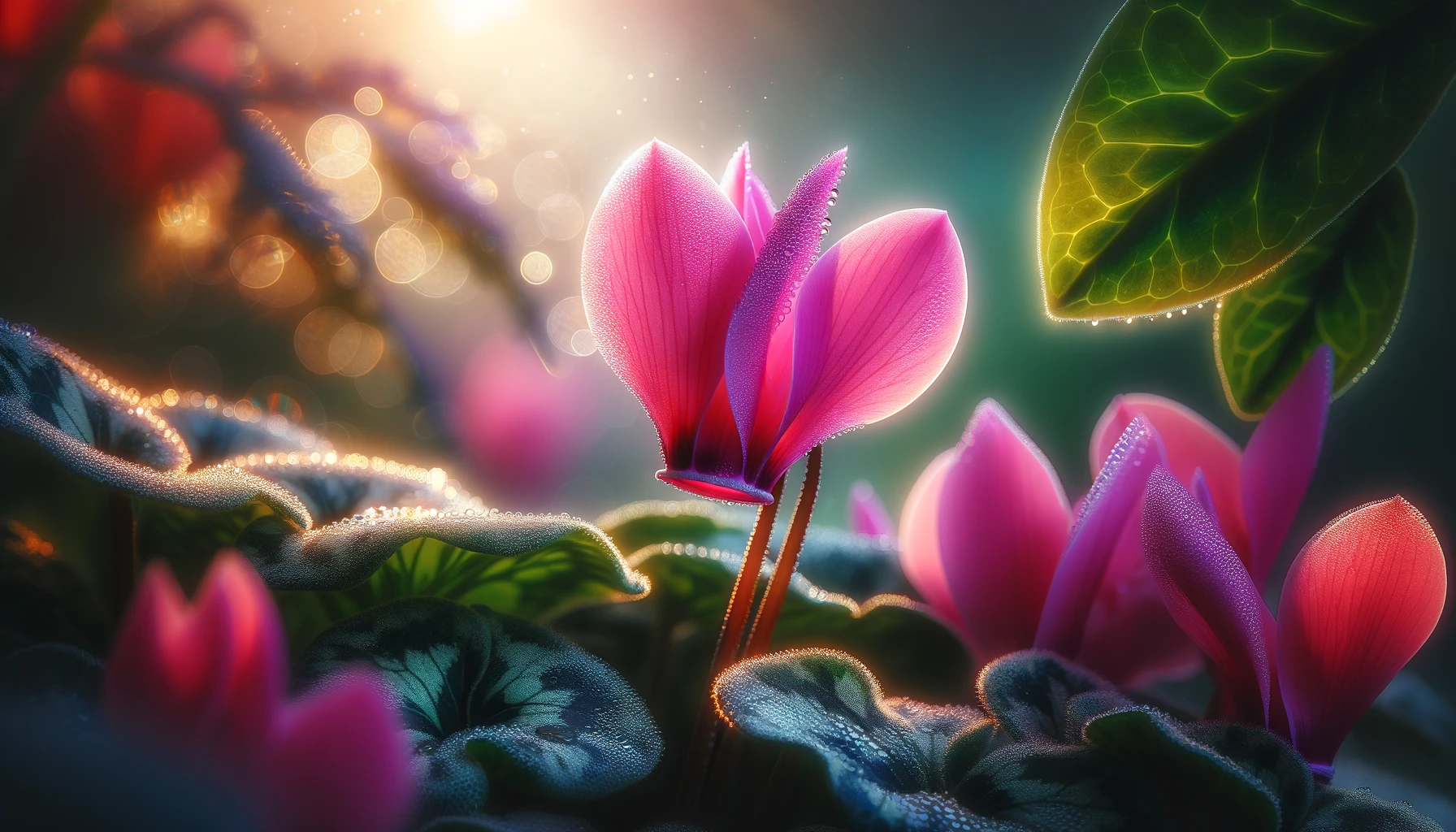
Cyclamen is another enchanting choice for winter flower gardening indoors, known for its delicate blooms with distinct swept-back petals that come in various shades like pink, red, purple or white. These elegant flowers thrive in cooler temperatures typical of the winter season; making them ideal companions for indoor gardening enthusiasts seeking beauty during chilly months.
When cultivating Cyclamen plants at home ensure they are placed in bright indirect light with cool temperatures around 50-60°F (10-16°C). Additionally provide ample humidity by placing pebble trays filled with water near the plant or using a humidifier if necessary.
Poinsettia
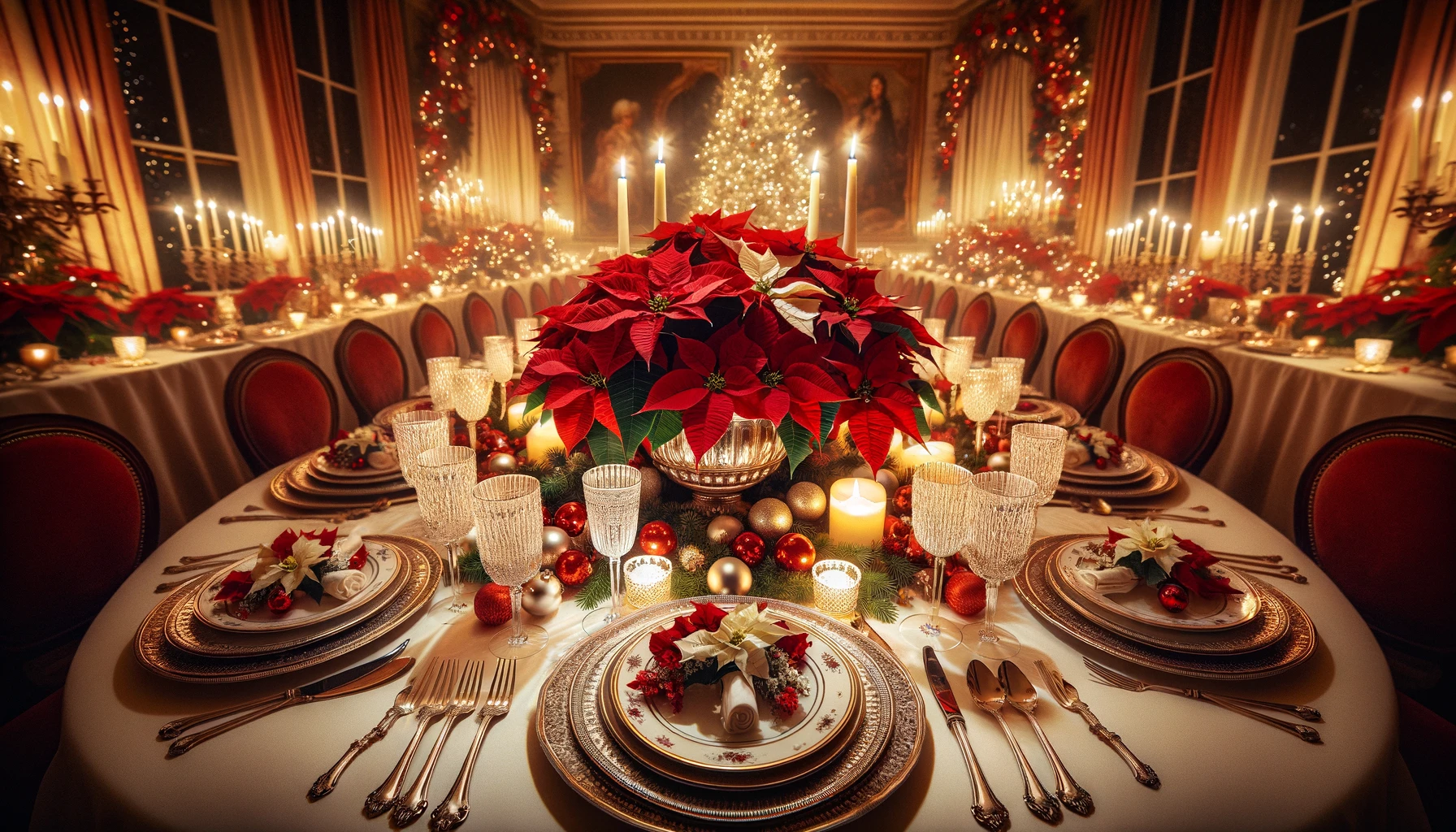
Poinsettias are iconic winter flowers often associated with festivities due to their vibrant bright red bracts surrounding small yellow flowers resembling petals. To maintain these lively colors throughout winter requires specific care including consistent watering without waterlogging the soil and keeping them away from drafts which could cause leaf drop.
Remember not to place Poinsettias near cold windowsills or heaters as sudden temperature changes can harm these delicate beauties.
Easy-to-Grow Indoor Flowers
African Violets
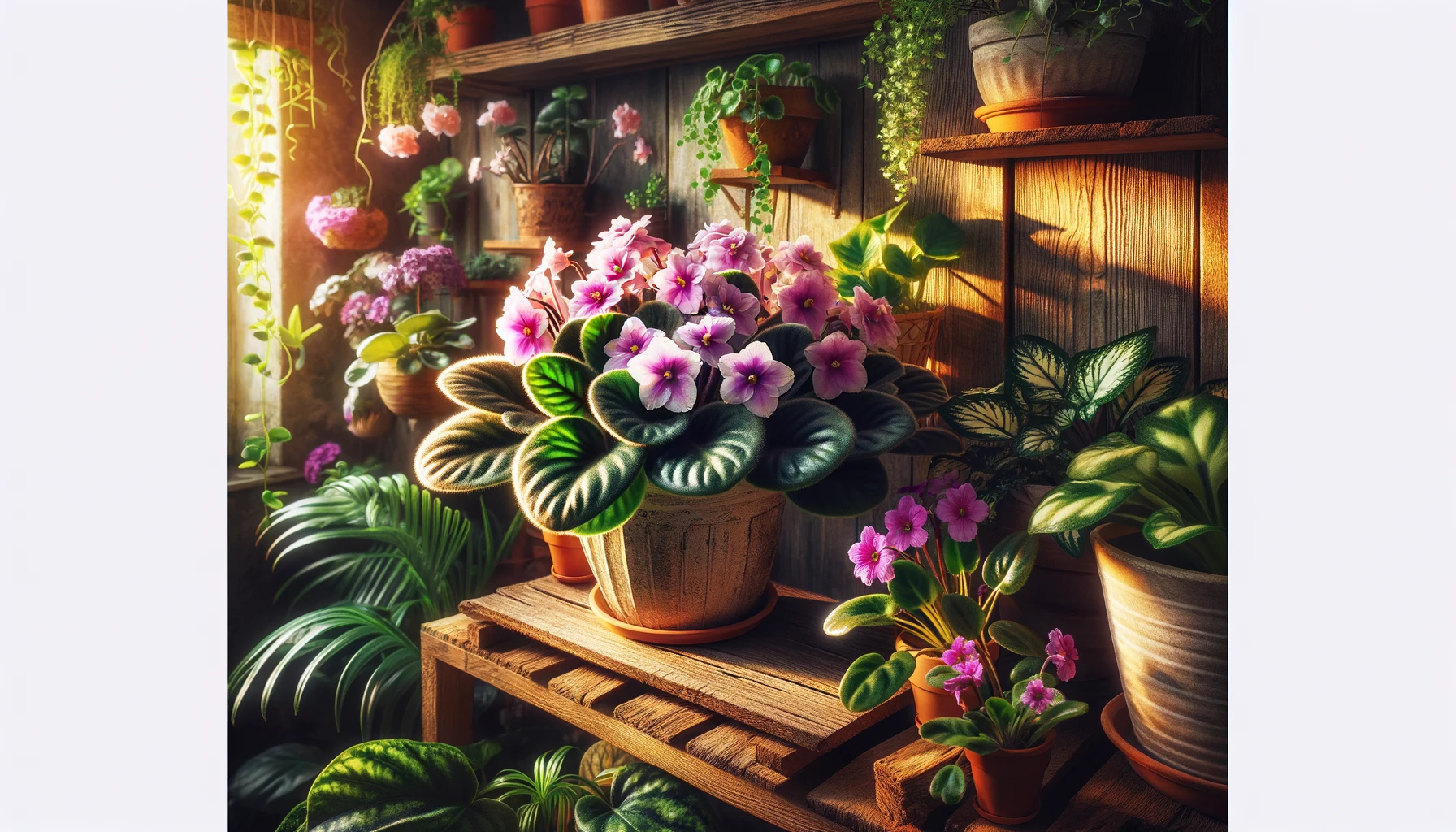
African violets are delicate flowering plants that bloom in various colors. They thrive in warm, humid environments, perfect for indoor gardening during winter. With the right care, African violets can blossom all year round, bringing beauty to your home.
These indoor plants require regular watering and well-draining soil to prevent root rot. Placing them near east or west-facing windows ensures they receive enough indirect sunlight without scorching their leaves. Maintaining a consistent temperature between 65-75°F helps African violets flourish.
Orchids

Orchids are elegant flowers available in diverse shapes, sizes, and colors. While they demand specific care such as proper watering and light exposure, their stunning blooms make the effort worthwhile. Orchids add a touch of sophistication to indoor spaces even during the winter months.
To ensure these houseplants thrive indoors during winter, it’s crucial to use a well-draining potting mix designed for orchids. Watering them once a week while allowing excess water to drain out helps prevent root rot. Providing bright but indirect light is essential for orchid growth and blooming.
Peace Lily
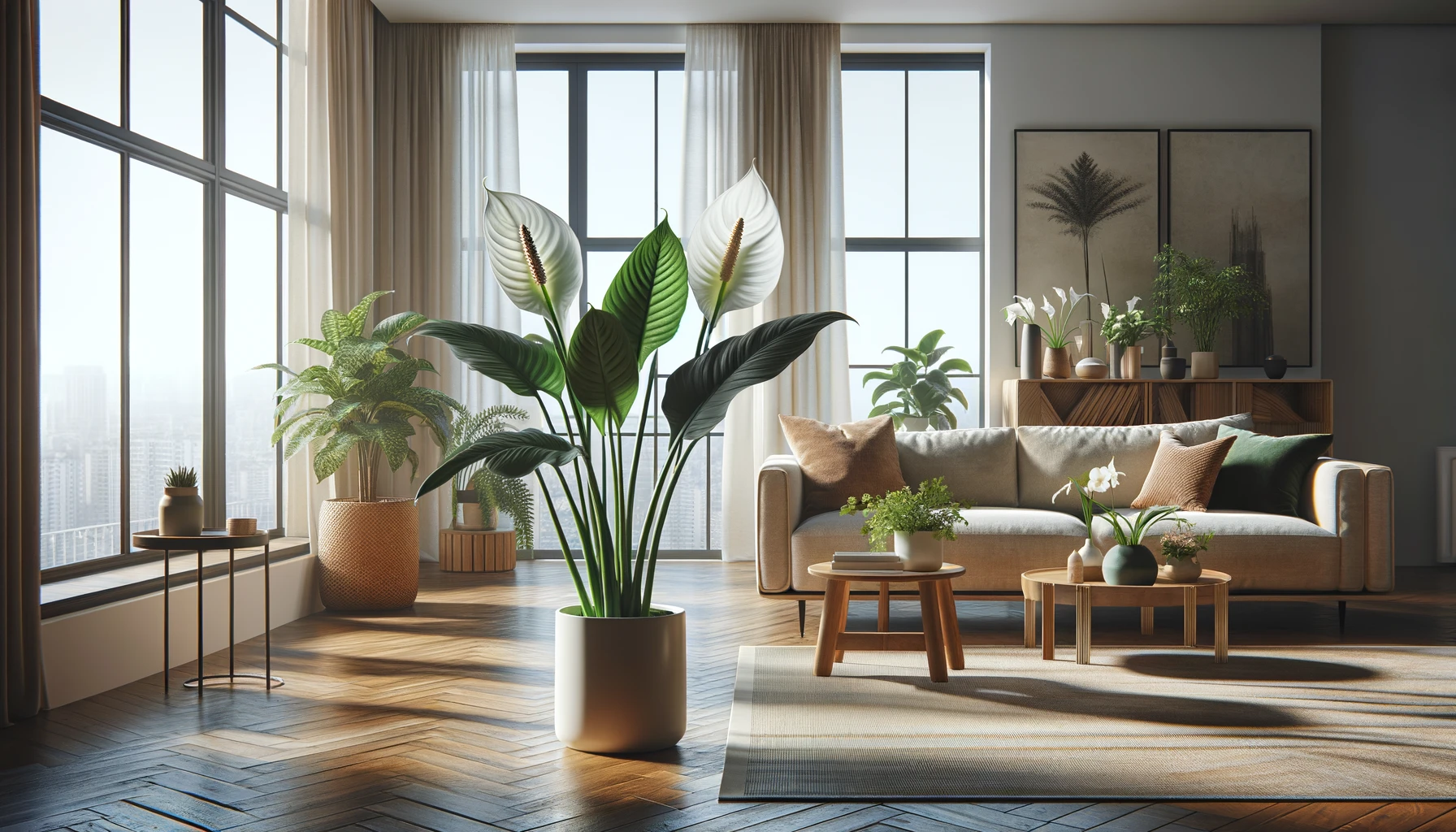
Peace lilies are favored indoor plants recognized for their white flowers and glossy green leaves. Thriving in low-light conditions makes them ideal choices for areas with limited sunlight indoors throughout winter months. Moreover, peace lilies contribute to air purification by removing harmful toxins like formaldehyde from the environment.
When caring for these indoor beauties during winter months, remember not to overwater them; allow the top inch of soil to dry out before rehydrating the plant thoroughly again every one or two weeks depending on humidity levels inside your home space.
Unique Indoor Flowering Plants for Winter
Jasmine
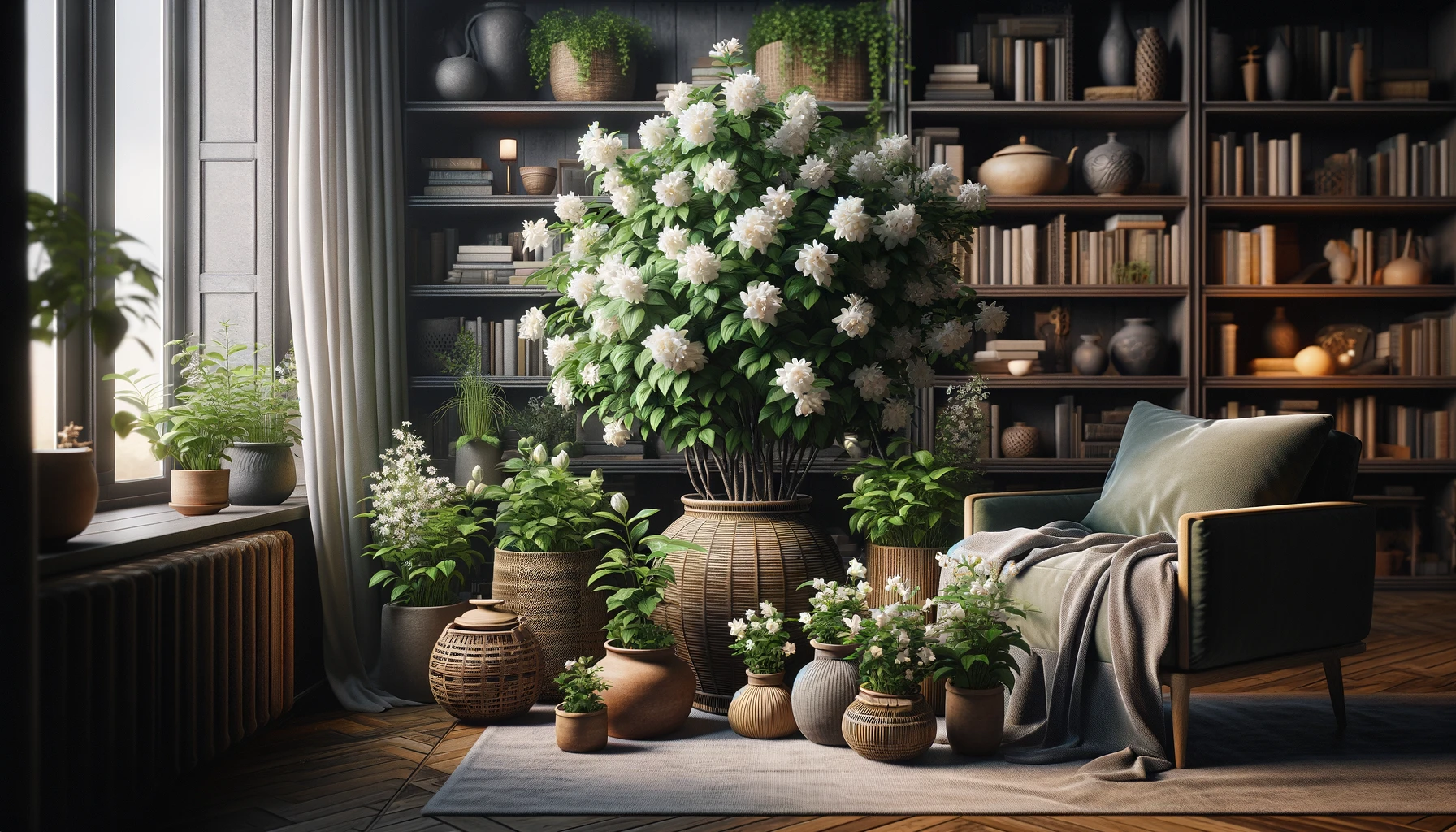
Jasmine, known for its fragrant blossoms used in perfumes and teas, offers a delightful addition to your indoor garden. The small white or yellow flowers emit a captivating scent that fills the room. To cultivate jasmine indoors successfully, ensure it receives plenty of sunlight and regular pruning to maintain its health.
The allure of jasmine lies not only in its charming appearance but also in the enchanting fragrance it exudes. Imagine walking into a room filled with the sweet aroma of jasmine blossoms on a cold winter day—it can instantly uplift your spirits. With proper care and attention to its sunlight needs, jasmine can thrive indoors during the winter months.
Kalanchoe

Kalanchoe is another excellent choice for indoor winter gardening due to its vibrant clusters of flowers available in various hues like red, orange, pink, or yellow. This succulent plant boasts an impressive resilience against dry indoor conditions—a perfect fit for those seeking low-maintenance flowering plants during winter. The blooms of kalanchoe can last for weeks at a time, bringing color and cheer to your living space throughout the colder season.
When you’re looking to brighten up your home during the dreary winter days, kalanchoe’s radiant blooms are sure to do just that! Its ability to withstand dry environments makes it an ideal companion for those who may not have green thumbs but still want beautiful flowering plants around them.
Forcing Bulbs for Winter Blooms
Tulips
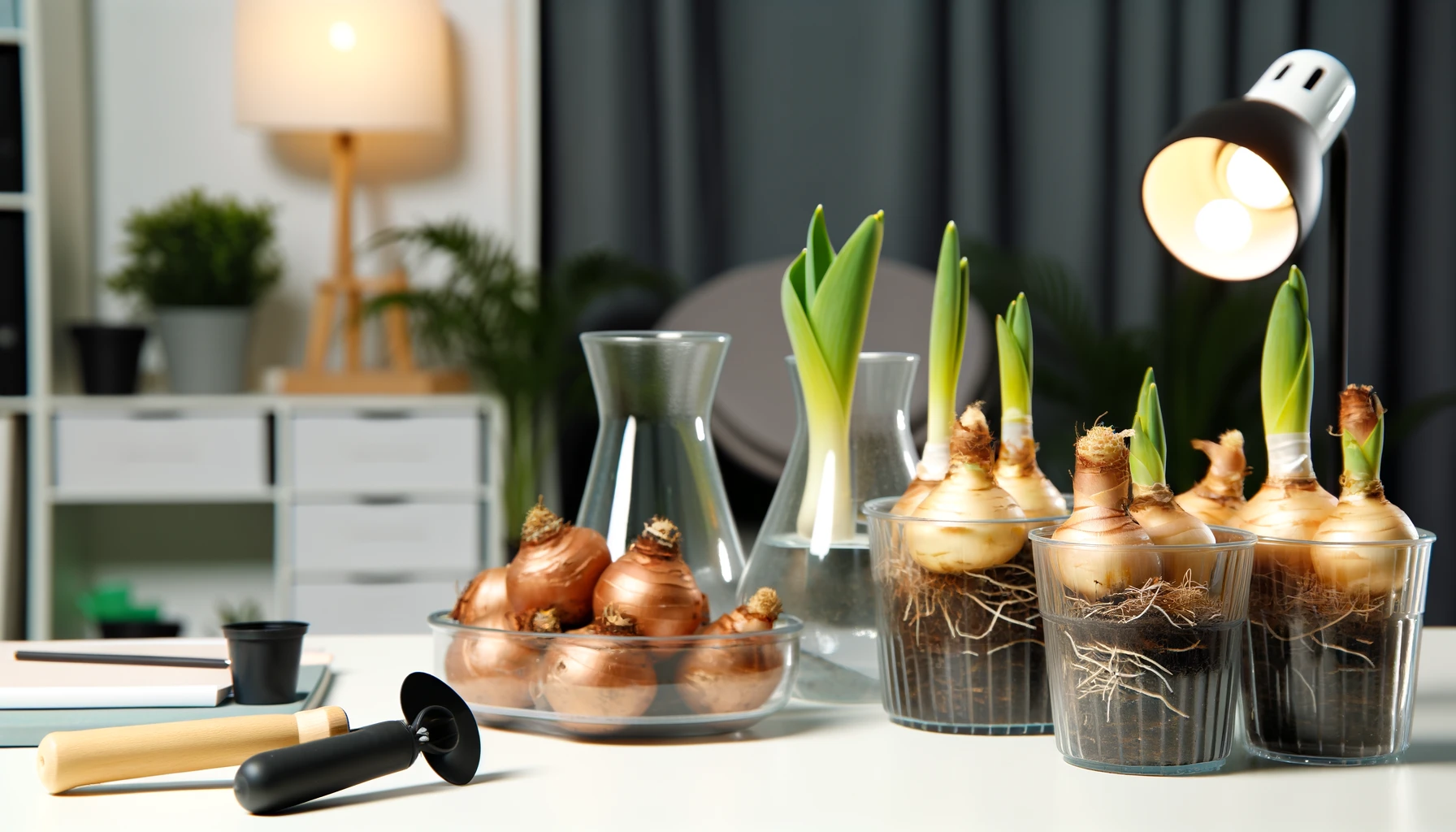
Tulips are vibrant spring flowers that can be coaxed to blossom indoors during the winter months. These classic flowers display a variety of hues and feature unique cup-shaped petals. To grow tulips inside, you need to pre-chill the bulbs before planting them in containers. This process mimics the cold period they would naturally experience outdoors during winter.
To force tulip bulbs for indoor blooms, start by selecting healthy bulbs with no signs of rot or damage. Next, place the bulbs in a paper bag filled with peat moss and store them in your refrigerator for 10-16 weeks. After chilling, plant the bulbs in pots with well-draining soil and water thoroughly. Keep them in a cool location until shoots emerge, then move them to a sunny spot as they grow.
Hyacinths
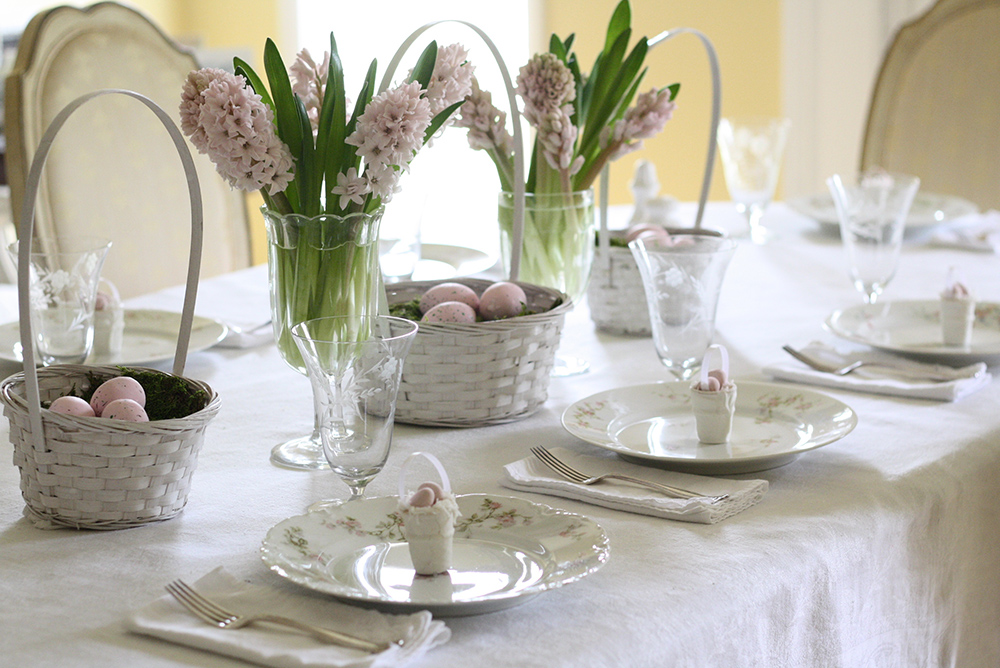
Hyacinths are highly fragrant flowers known for their clustered blooms on tall stems that add elegance to any indoor space during winter. Available in an array of colors like pink, purple, white, and blue, these aromatic blossoms bring cheerfulness indoors when forced to bloom out of season. Growing hyacinths indoors involves simulating their natural dormant period followed by encouraging growth once planted.
When forcing hyacinth bulbs indoors for winter flowering, choose large healthy bulbs free from blemishes or soft spots. Refrigerate the prepared bulbs wrapped in paper towels within a plastic bag for 12-14 weeks at around 40°F (4°C). Plant each bulb pointed side up just below the soil surface in pots with good drainage holes and keep them moist but not waterlogged throughout their growth cycle.
Growing Flowers Indoors During Winter
Light Requirements
Understanding the light needs of your chosen flowers is crucial. Some flowers, like African violets and orchids, thrive in bright, direct sunlight. On the other hand, plants such as peace lilies and ferns prefer indirect or low-light conditions.
Proper lighting ensures healthy growth and vibrant blooms during winter. Researching the specific light requirements of each flower type before starting your indoor garden will help you provide adequate light for optimal growth.
Watering Techniques
Maintaining proper watering techniques is essential for indoor flowers to thrive during winter. Overwatering can lead to root rot, while underwatering can cause dehydration in plants. Each type of flower has unique watering needs that must be met consistently for healthy growth.
Researching the watering requirements of your specific flowers is key to preventing issues like wilting or yellowing leaves due to improper moisture levels. By following appropriate guidelines based on plant species, you can ensure that your indoor garden stays lush and vibrant throughout the winter months.
Temperature Control
For successful winter flower gardening indoors, maintaining the right temperature range is vital for plant health and growth. Most winter flowers prefer cool temperatures between 60°F to 70°F (15°C to 21°C) for optimal development.
Avoid exposing indoor flowers to drafts or extreme temperature fluctuations as they can stress plants and hinder their ability to bloom properly during winter months. Providing a stable environment with consistent temperatures will promote healthy growth and beautiful blossoms in your indoor garden.
Tips for Successful Indoor Flower Gardening
Fertilization
Indoor flowers during winter need fertilization to thrive. Use a fertilizer made for flowering plants and follow the instructions. Avoid overfertilizing, which can harm your plants.
Regular fertilization is vital for indoor flowers in winter. Choose a fertilizer designed for blooming plants. Overusing fertilizers can damage the plant by causing nutrient burn.
To keep your indoor flowers healthy in winter, proper fertilization is crucial. Opt for a flower-specific fertilizer and adhere to the recommended dosage to prevent issues.
- Pros:
- Promotes healthy growth
- Enhances vibrant blooms
- Cons:
- Risk of overfertilizing
- Potential damage due to excessive nutrients
Pruning
Pruning aids in maintaining indoor flowers’ shape and size while encouraging fresh growth. Regularly remove dead or yellowing leaves and spent blooms from your plants.
For successful indoor flower gardening during winter, don’t overlook pruning tasks. Trim back leggy stems on your indoor flowers to stimulate bushier growth and more abundant blossoms.
In winter, effective pruning practices are essential for thriving indoor flowers. By pruning regularly, you can maintain the health of your plants by removing dead leaves and encouraging new growth.
- Remove dead or yellowing leaves regularly.
- Prune back leggy stems.
- Encourage bushier growth with proper pruning techniques.
Pest Management
Protect your indoor flowers from pests like aphids, mealybugs, and spider mites during wintertime by inspecting them frequently for signs of infestation.
During winter flower gardening indoors, be vigilant about pest management as common culprits like aphids may attack your plants easily indoors too!
When tending to indoor flower gardens in winter months, watch out for pests such as aphids that could harm your precious blooms without proper care measures taken promptly.
Cheerful Indoor Plants for Winter Blooms
Begonia
Begonias are vibrant indoor flowers that come in various colors, sizes, and leaf shapes. They can be grown for their beautiful blooms or their attractive foliage. Begonias thrive in bright, indirect light and moderate humidity levels. These plants are versatile and can add a pop of color to your indoor garden during the winter months.
One of the most popular winter flowers is the Clivia plant, known for its stunning orange or yellow blooms. Clivia thrives in low-light conditions, making it an ideal choice for indoor spaces with limited sunlight during the winter season. These plants also prefer cooler temperatures, which align perfectly with typical indoor environments during colder months.
Clivia
After blooming, Clivia plants require a period of dormancy to encourage future flowering cycles. This resting phase allows the plant to conserve energy and prepare for another round of beautiful blossoms when conditions become favorable again. By understanding these plant-specific needs like dormancy requirements after blooming, you can ensure that your Clivia continues to produce stunning blooms year after year.
In addition to Begonias and Clivias, other cheerful options for winter flower gardening indoors include African Violets, Cyclamens, and Orchids. Each of these plants offers unique characteristics that make them well-suited for indoor cultivation during the winter season.
Step-by-Step Guide to Forcing Bulbs Indoors
Choosing Bulbs
When diving into winter flower gardening indoors, the first step is choosing the right bulbs. Opt for firm, healthy bulbs without any signs of mold or damage. Different flowers have unique bulb requirements, so it’s essential to follow specific guidelines for each type. For instance, amaryllis bulbs are large and should be planted individually in a pot.
When selecting tulip bulbs, look for ones that are plump and free from blemishes. Tulips thrive when they’re planted close together in a container with good drainage. Each type of flower has its own needs; daffodils prefer well-draining soil with added sand.
Pre-chilling Process
Certain bulbs need a pre-chilling process to mimic winter conditions before planting them indoors. This step helps break their dormancy period and readies them for blooming inside your home during the colder months. Follow the recommended duration and temperature for pre-chilling to ensure successful growth.
For example, hyacinth bulbs require about 10 to 12 weeks of chilling at temperatures around 40°F (4°C). After this chilling period, plant them in pots filled with well-draining soil mixtures suitable for bulb growth. The cooling period stimulates root development before flowering begins indoors.
Planting and Care
After selecting your bulbs and completing the pre-chilling process, proper planting techniques are vital for your indoor garden’s success during winter months. Ensure you use containers with adequate drainage holes to prevent waterlogging that can harm delicate roots underground.
When planting crocus bulbs, place them about three inches deep in well-draining soil mixed with compost or peat moss while maintaining consistent moisture levels throughout their growing cycle indoors. Regularly check on watering schedules as different flowers have varying needs; paperwhites prefer consistently moist but not waterlogged soil compared to other varieties like snowdrops that require drier conditions between watering sessions.
Final Remarks
You’ve now got the lowdown on blooming flowers indoors during the chilly winter months. From the perks of indoor gardening to a step-by-step guide for forcing bulbs, you’re armed with the know-how to turn your home into a winter wonderland of blossoms. So, grab those gardening gloves and get your hands dirty – well, maybe not too dirty since it’s indoors! Experiment with different winter-flowering plants, follow the tips shared here, and watch your indoor garden flourish even when it’s frosty outside. Your cozy sanctuary will soon be bursting with vibrant colors and sweet fragrances, making those winter blues a thing of the past.
Frequently Asked Questions
What are the benefits of indoor winter gardening?
Indoor winter gardening brings nature inside, boosts mood during colder months, and allows you to enjoy flowers year-round. It’s a great way to stay connected with plants even when it’s chilly outside.
Which popular winter flowering plants can I grow indoors?
Some popular choices for indoor winter flowering plants include Poinsettias, Christmas cactus, Amaryllis, Cyclamen, and Orchids. These plants add color and vibrancy to your indoor space during the winter season.
How can I successfully grow flowers indoors during winter?
Ensure your indoor flowers receive adequate sunlight or artificial light sources, maintain proper humidity levels, water them appropriately without overwatering, and use well-draining soil. Regularly monitor their growth and health to ensure they thrive indoors.
What are some unique indoor flowering plants suitable for the winter season?
Consider growing Peace Lily (Spathiphyllum), Winter Jasmine (Jasminum nudiflorum), Bird of Paradise (Strelitzia reginae), Kalanchoe blossfeldiana or Paperwhites (Narcissus papyraceus) for unique blooms that brighten up your home in wintertime.
How do I force bulbs for beautiful blooms indoors during winter?
To force bulbs like Tulips or Hyacinths indoors for blooming in winter:
- Chill the bulbs in a refrigerator.
- Plant them in pots with well-draining soil.
- Place them in a cool location until shoots appear.
- Move them into indirect light as they grow.
- Enjoy vibrant blooms!
